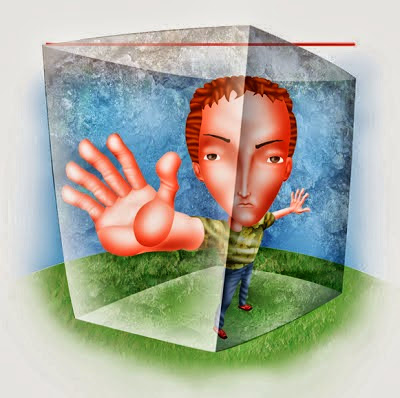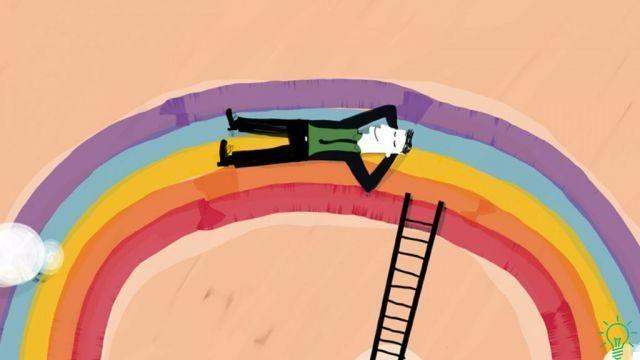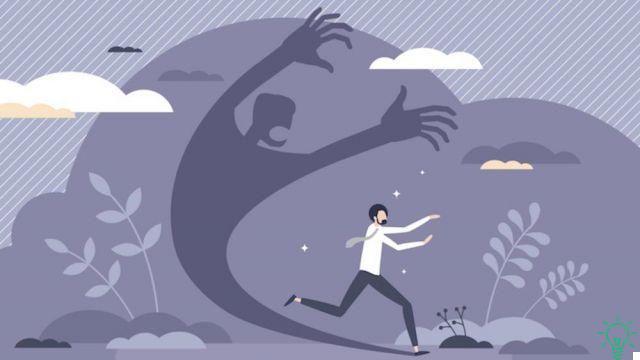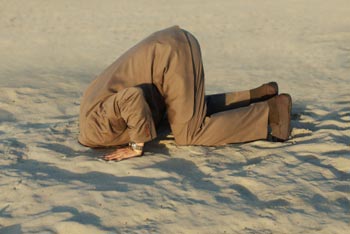
A meteor can hit us while jogging or commuting to work. It's a possibility, but so remote that we don't normally think about it. The catastrophists, on the other hand, yes. They spend most of the day imagining the worst calamities by drawing a post-apocalyptic scenario.
The truth is that all of us, from time to time, practice a catastrophic thought that plunges us into an ocean of terrifying and unlikely possibilities. This is what we do when we start the day off on the wrong foot and automatically think that everything will go wrong. When that way of thinking becomes the norm we have a problem and risk suffering from anxiety or depression.
What is catastrophism?
Catastrophic thinking, or catastrophism, is a cognitive bias that leads us to imagine the worst possible scenarios, to nurture a series of irrational beliefs that end up influencing our attitudes, behaviors and decisions.
It is an irrational belief because we assume that a disaster will occur, even if we have no reasonable reasons or reliable clues to confirm it. It's like when a hypochondriac person diagnoses himself with a serious illness as soon as he feels a little pain.
Catastrophism, in psychology, involves assuming that negative events will occur that eventually do not materialize, but despite the fact that we systematically err in our assumptions, we fail to take the evidence and continue to fuel catastrophic thinking.
What is the origin of catastrophic thinking?
Catastrophic thinking has its roots in evolution. Our brains automatically react to the smallest warning signals because they could save our lives. We also have an extraordinary predisposition to react with fear to ambiguous and uncertain scenarios. In practice, our brain prepares for the worst to protect and defend itself.
This means that catastrophism is a natural response, the problem begins when the reaction is permanently activated and affects all areas of our life. Then it is when catastrophism becomes a maladaptive style of coping that does us more harm than good, because it keeps us in a constant state of alert, as if imminent danger awaits us around every corner.
Why do some people get trapped in a vicious circle of catastrophic thoughts?
In addition to our evolutionary conditioning, catastrophism is also something that is learned. Our childhood experiences can leave a profound mark, especially if they have given us the message that the world is a dangerous and hostile place, so we must be ready to defend ourselves at any moment.
Subsequent negative life experiences can also leave their mark, so fear generalizes to become an automatic response pattern. Once this pattern is established, catastrophic thoughts will be more and more common and will trigger an intense emotional response that will make us feel bad.
Make a storm in a glass of water - and drown in it
The catastrophists tend to transform a small mishap into a Dante scenario, ending up making a storm in a glass of water in which they will end up drowning.
Their irrational beliefs generate worry, anxiety and fear of life. In fact, catastrophic anxiety thoughts have been linked to an increased tendency to get angry and express anger in a maladaptive way. They have also been linked to ideas of revenge and resentment, as well as lower pain tolerance.
It is obvious that if we exaggerate the consequences of negative things that happen to us, we feel sad and angry. It is also obvious that imagining everything that can happen generates a permanent state of anxiety and stress that will eventually destroy us.
Indeed, the sad fact is that catastrophic predictions end up being prophetic because we ourselves - unconsciously - are concerned with transforming them into reality. A hypochondriac person, for example, can end up developing more serious illnesses precisely because of the constant stress produced by his catastrophism.
Techniques for eliminating catastrophic thoughts
1. Activate the rational mind. Use statistics.
The first step is to detect catastrophic thinking. It may seem trivial, but the truth is that most people who activate these beliefs are convinced that their fears are completely founded.
We need to understand that our brains are constantly estimating the odds of particular events occurring. To do this, follow two guidelines: one logical and rational and one based on your experiences.
Logically, airplanes are the safest means of transportation, but a person who is afraid of flying will not rely on these statistics, but on their own fears or experiences. Consequently, he will not distinguish between reality and his fears, between what is objectively true and what has been added by his imagination.
Therefore, it is fitting to ask: What evidence confirms my thoughts? Which ones contrast them? Do I make these kinds of judgments when I'm feeling good or just when I'm anxious, sad, or frustrated?
2. Think about the consequences of the event. Use the right words.
Once the rational mind is activated, we must try to think objectively about the possible consequences of the event. If the train is 10 minutes late, is it a nuisance or a catastrophe? What is the worst consequence of this delay?
In some cases it could cause serious problems, but in most cases it will be nothing more than a simple setback. Catastrophists need to pay more attention to the words they use because it will eventually affect their worldview.
Therefore, it is important to put things in perspective and use the right words to evaluate situations and their consequences, avoiding the tendency to use catastrophic terms. One technique to eliminate catastrophic thoughts is to think about what we would say to a person who is experiencing something similar, it is likely that our words would be more conciliatory and reassuring than those we would say to ourselves.
3. Change the catastrophic idea. Without falling into naive optimism.
Once you have identified the catastrophic thinking, it is worth replacing it with a more realistic one. But it is important not to minimize the consequences and avoid excess of optimism, because our brain does not allow itself to be fooled so easily.
If something particularly disappointing has happened to us, we cannot reassure ourselves by telling ourselves that everything is fine and pretending that nothing has happened. This attitude is not healthy. We need to understand that things can be moderately negative, but they can also become very negative, and when they do, we need to acknowledge that to find solutions.
But when things aren't that bad, we should restructure our thinking in order to analyze what is happening from a more objective position. For example, instead of thinking: “the rain has completely ruined my day”, we can think: “I feel disappointed because I have not been able to do what I wanted” and then look for a more satisfying alternative.

























